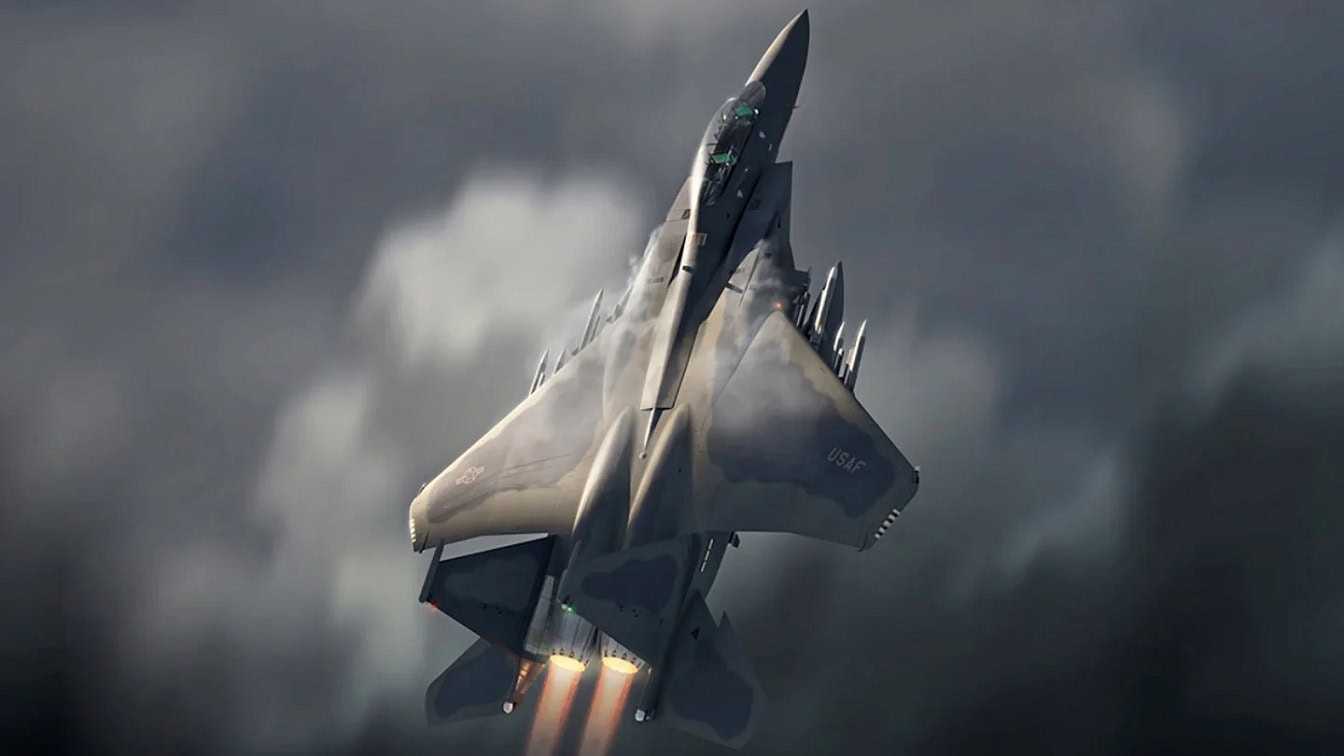The U.S. Air Force’s F-15EX has successfully completed its initial integrated test and evaluation phase.
According to the service, the 85thTest and Evaluation Squadron validated the new and improved fighter jet’s employment of the longest air-to-air and air-to-ground standoff munitions that the Department of Defense possesses.
Now that this critical test has been completed, the enhanced fourth-generation fighter could undergo a full-rate production in the near future.
Here Comes the F-15EX
During the Phase I tests, the F-15EX joined fifth-generation aircraft in a 19 Large Force Exercise. Maj. Calvin Connor, 85thTES F-15 division commander commented that “Proving the F-15EX capability to employ three JASSMs after witnessing validation of the Air-to-Air dominance role it can play with a 12 AMRAAM loadout is incredible. The firepower a 4-ship of F-15EXs brings to a combatant commander is tremendous.” Earlier this month, the F-15EX Eagle II made its inaugural appearance in Missouri, after a nearly two-and-a-half-year gap since the first two airframes of its kind were introduced back in 2021.
The next-generation fighter airframe is being developed by Manufacturer Boeing as the latest iteration of the F-15 Eagle platform. As the most sophisticated variant of the all-weather, multi-role Eagle family, the Eagle II will represent the most heavily armed fighter jet in the skies once it enters service.
What Makes The F-15 Special
The F-15 Eagle celebrated its 50th anniversary last year, an incredible feat for such a legendary airframe.
Notably, the Eagle possesses a truly stunning 104 to 0 kill ratio in its decades of service. The formidable airframe can be traced back to the early days of the Vietnam War, when both the U.S. Air Force and Navy envisioned more advanced airframes in their respective arsenals.
As part of then-Defense Secretary Robert McNamara’s effort to develop a jointly-used airframe, both services embarked on the TFX which would serve as a long-range interceptor airframe for the Navy and a medium-range interdiction airframe for the Air Force.
Ultimately, McDonnell Douglas (now Boeing) offered the most promising prototype to the services and was awarded the contract to develop the joint airframe. By the 1970’s, the F-15A initial variant took its maiden flight and was delivered to the 58thTactical Fighter Training Wing a couple of years later. Over the years, the Eagle has been widely exported and has achieved an honorable service history.
Back in 2020, the F-15EX program was approved under the National Defense Authorization Act to replace some of the military’s aging fleets. Following the program’s green light, the Air Force wanted to procure the new and improved fighters as quickly as possible. To meet the service’s need, Boeing redirected two airframes from the F-15QA production batch meant for Qatar and delivered the airframes with U.S. markings.
F-15EX Looks Special
The Eagle II is the first iteration of its series to feature Large Area Display glass-cockpit, digital fly-by-wire flight controls, an APG-82 AESA radar and other critical capabilities.
As detailed by the Air and Space Forces, “Due to insufficient FY22 procurement, the F-15C/D fleet has continued flying beyond its designed service life, posing a serious risk of structural failure. Similar infrastructure, support, and training requirements will permit existing F-15 units to quickly transition to the F-15EX.”
The newest variant will be quicker than its predecessors and will be able to carry a larger payload at greater distances. In fact, the new platform can sport the greatest payload of any other strike fighter in the skies, including fifth-generation airframes. The F-15EX can sport up to a dozen air-to-air missiles or 30,000 pounds of munitions, compared with the 6,000 pounds of internal storage that the F-35 Lightning II can carry. Additionally, the new Eagle IIs are expected to be able to yield 22-foot hypersonic missiles that are currently in the development stage.
While the Eagle II does have its payload advantages over its fifth-generation F-22 Raptor and F-35 Lightning counterparts, it does not possess stealth capabilities. However, the enhanced Eagle is protected by an advanced active electronically scanned array radar along with other technological features that enables it to identifyincoming threats. Two F110-GE-129 engines power the new Eagle, with each generating a thrust of nearly 29,000 pounds. The platform can notably fly at speeds of Mach 2.5 (times the speed of sound), making it nearly impossible for enemy airframes to catch.
F-15EX Fighters Coming to China’s Military Backyard
The F-15EX Eagle II has so many great attributes to offer that even non-officially aligned countries are taking notice. Late last month, Indonesia announced it would procure two dozen F-15EX fighters from Boeing in a breakthrough deal.
The White House is focused on strengthening ties in the Indo-Pacific region, making this transaction with Indonesia right on target. In recent months, Jakarta has had some threatening run-ins with China’s Navy. Since Indonesia’s territory is uniquely spread out over 17,000 islands across millions of miles in the ocean, the addition of Eagle II fighters in its military could help deter Beijing’s provocations.
Maya Carlin, a Senior Editor for 19FortyFive, is an analyst with the Center for Security Policy and a former Anna Sobol Levy Fellow at IDC Herzliya in Israel. She has by-lines in many publications, including The National Interest, Jerusalem Post, and Times of Israel. You can follow her on Twitter: @MayaCarlin.
From the Vault
The Navy Sent 4 Battleships To Attack North Korea
‘Sir, We Hit a Russian Submarine’: A U.S. Navy Sub Collided with a Nuclear Attack Sub

